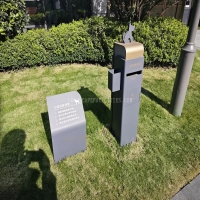Welcome to the website for landscape facilities products and knowledge.
How does the table’s design impact the surrounding microclimate, such as shade or heat retention?
When we consider table design, aesthetics and functionality typically dominate the conversation. Yet, the subtle interplay between a table's physical characteristics and its immediate microclimate reveals a fascinating dimension of environmental design that significantly impacts human comfort and ecological balance.
A table's canopy structure, whether an ornate pergola-style top or a minimalist slab, dictates shade patterns with mathematical precision. Dense, solid surfaces cast sharp, cooling shadows that reduce ground temperature by up to 15°F, while perforated or slatted designs create dappled light effects that moderate temperature extremes. This strategic shading capability directly influences local evaporation rates and soil moisture retention beneath the table area.
Material selection proves equally crucial to thermal dynamics. Dark granite or metal surfaces can absorb up to 90% of solar radiation, reradiating heat long after sunset and creating localized heat islands. Conversely, light-colored composite materials or naturally reflective finishes bounce solar energy back into the atmosphere. Innovative phase-change materials embedded within table structures now offer thermal buffering, absorbing excess heat during peak hours and gradually releasing it as temperatures drop.
The geometry of table legs and supporting elements orchestrates invisible airflow patterns. Solid aprons or decorative panels can disrupt natural ventilation, creating stagnant air pockets, while open framework designs facilitate breeze channeling. This aerodynamic consideration becomes particularly valuable in urban settings where tables can either exacerbate or alleviate the canyon effect between buildings.
Advanced designs now incorporate biophilic elements that transcend mere decoration. Tables with integrated planting channels or living edges containing mosses and succulents actively contribute to evaporative cooling through plant transpiration. These biological components can reduce surrounding air temperatures by 2-4°C while improving air quality through particulate filtration.
The height and proportionality of a table further determine its microclimatic footprint. Low-profile designs minimize shadow displacement throughout the day, while elevated surfaces create more dynamic thermal zones. This vertical dimension interacts with seasonal sun angles to produce dramatically different microclimates in winter versus summer months.
Through intelligent design synthesis—combining appropriate materials, strategic perforations, and biological integration—tables transcend their conventional purpose to become active moderators of microclimates. They stand as unassuming yet powerful instruments in our ongoing negotiation with the elements, demonstrating that even the most commonplace objects hold untapped potential for environmental harmony.
Related search:

Recommendation
Outdoor cat and dog feces trash can; Community pet trash can; Metal multi-color design